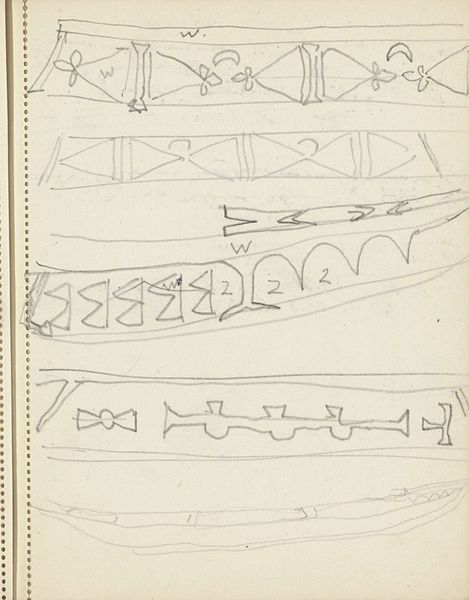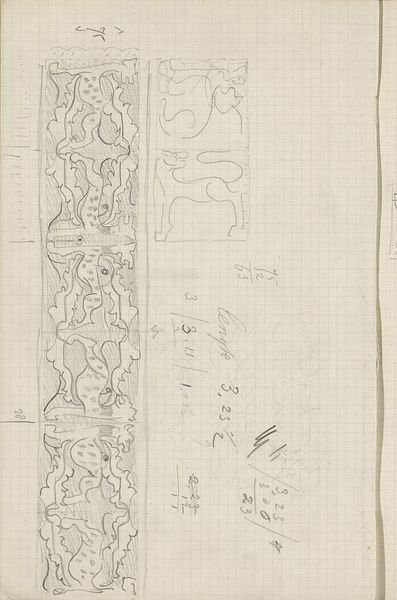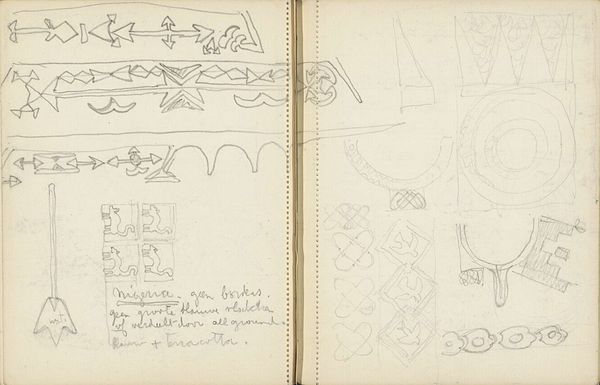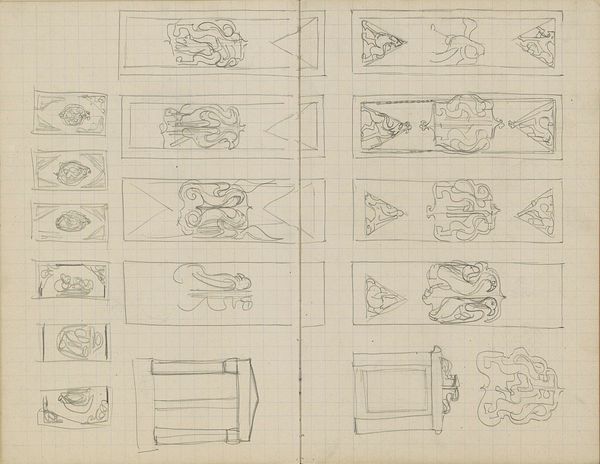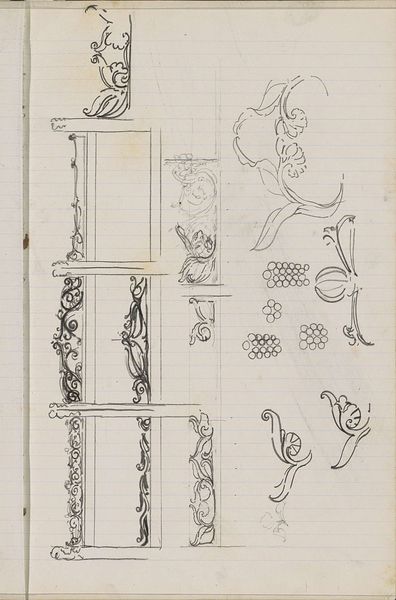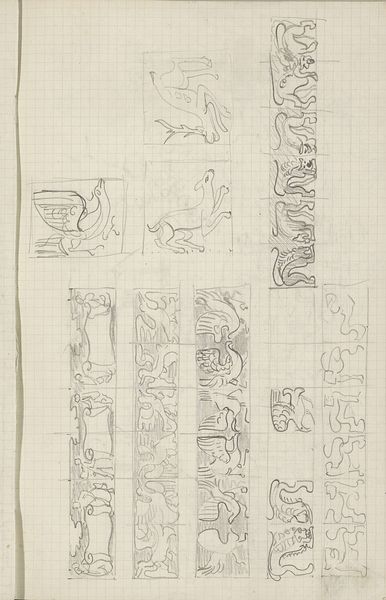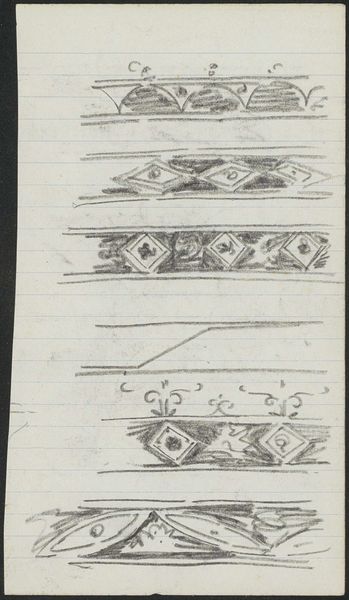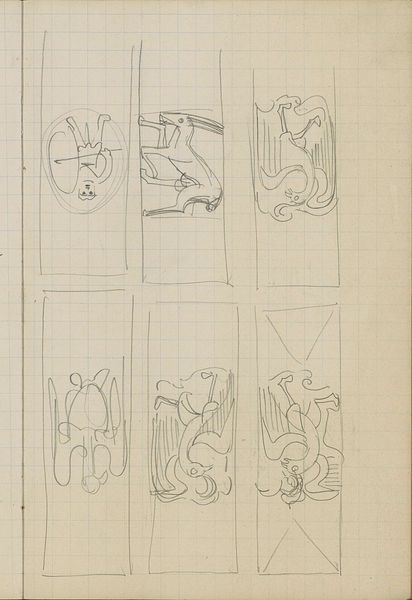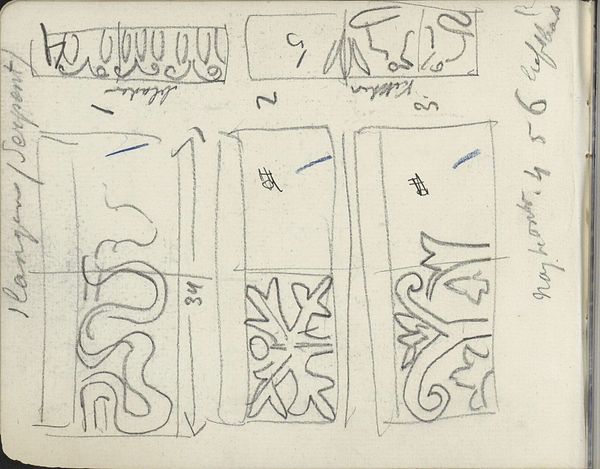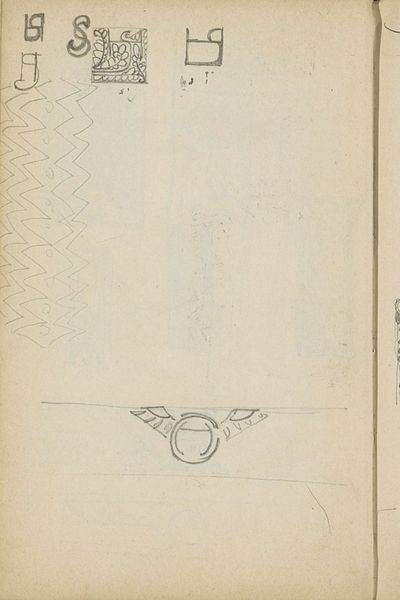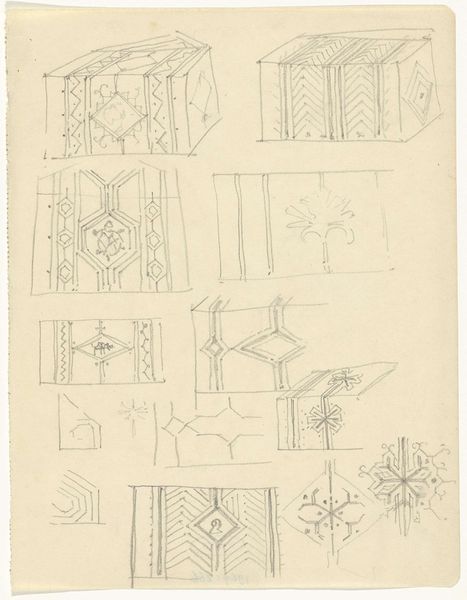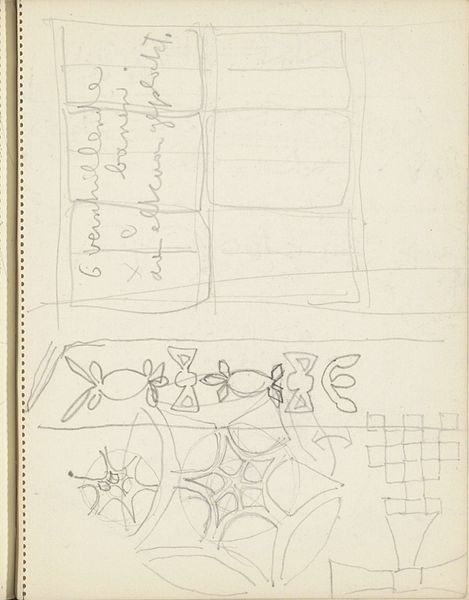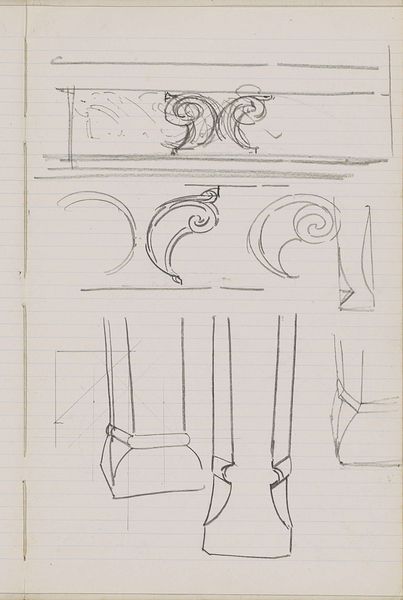
drawing, pencil
#
drawing
#
hand-lettering
#
hand lettering
#
geometric
#
pencil
#
line
Copyright: Rijks Museum: Open Domain
Curator: Here in the Rijksmuseum, we have an intriguing work titled "Decoratieve patronen," created sometime between 1916 and 1945 by Reijer Stolk. It’s a pencil drawing showcasing various abstract, geometric patterns. My immediate reaction is one of quiet curiosity; it looks like a study of decorative possibility. Editor: There's something so tactile and process-oriented about seeing a drawing like this, a kind of raw look at pattern making. The visible pencil strokes, the somewhat haphazard arrangement, these emphasize the labor involved in developing designs. It feels intimate, like seeing an artisan at work. Curator: Absolutely, the context surrounding the work, being produced between world wars, might reveal Stolk's interest in themes that pull away from the horrors of conflict. Design, at the time, was certainly evolving and taking new influences, with artists turning to abstraction as a form of resistance against traditional, often nationalistic, art forms. Editor: Precisely, and if we consider the period’s social conditions, it raises the question of for whom, and for what purpose, were these designs intended? The fact that it’s a drawing on paper, a relatively accessible medium, suggests the work’s purpose might have been very much oriented to local craft, perhaps intended to fuel artistic skill. Curator: Perhaps even consider the political dimension. Even decorative arts could contribute to a sense of national identity or a counter-narrative through abstracted design. Did the availability and promotion of materials like pencils democratize access to art creation, thus affecting art and social identity, even modestly? Editor: It speaks volumes that we're viewing something that potentially documents such a process. This piece is very much about making something out of available means, about resourcefulness shaping artistic expression. A simple drawing in pencil turns into a window on labor, ingenuity and socio-political agency. Curator: Indeed. I'm now thinking about the way public perceptions and support shape artistic output in unexpected ways, and this particular drawing hints to all that. Editor: Likewise, considering how unassuming pencil drawings as pattern sketches end up in museum collections raises some exciting questions about artistic skill in historical narratives. Curator: A remarkable drawing, inviting to see so many angles between what meets the eye, and the wider world of socio-politics of art. Editor: I couldn't agree more. There is such value here as the sum of many materials, labor, skill, social context, it certainly deserves close consideration.
Comments
No comments
Be the first to comment and join the conversation on the ultimate creative platform.
